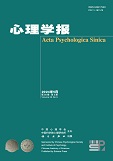While a body of previous research attempted to reveal which of the two decision strategies (i.e., intuition vs. deliberation) led to more prosocial behavior, we went a step further to examine the impact of decision strategies in prosocial behavior on social judgments. Specifically, we examined the link between decision strategies and perceptions of humanness. Prosocial behavior is closely related to humanness. Intuitive prosocial behavior may represent the helper’s genuine goodwill, and thus may be judged as higher in humanness than deliberative prosocial behavior. However, given the complexity of contextual factors as well as humanness, the answer to this question is more complicated than one may think. We hypothesized that intuitive prosocial behavior (vs. deliberative prosocial behavior) would be perceived as higher in the Human Nature (HN) but not the Human Uniqueness (HU) dimension, and only in highly emotional but not low emotional situations.
Four experiments (valid N = 1657) were conducted where participants responded to hypothetical scenarios depicting helpers using different decision strategies in various helping situations. Study 1 investigated the differences in humanness perceptions between intuitive prosocial actors and deliberative prosocial actors in a highly emotional situation. In Study 2, we adopted a 2 (decision strategy: intuitive vs. deliberative) × 2 (situational emotionality: high vs. low) between-subject design, exploring the interaction between situational emotionality and decision strategy on humanness perceptions. Study 3 was a pre-registered study to replicate Study 2 with different scenarios. To better interpret the findings, in Study 4, we introduced a manipulation of behavioral consequences to examine whether consequences would moderate the differences in humanness perceptions between the two decision strategies. In all the studies, HN and HU were measured and analyzed separately.
As hypothesized, people who performed intuitive prosocial behavior were rated higher on HN than those who performed deliberative prosocial behavior in the highly emotional situations (Study 1, t(174) = 5.44, p < 0.001, d= 0.820; Study 2, F(1, 400) = 3.45, p = 0.064; Study 3, F(1, 460) = 6.57, p = 0.011, η2p = 0.014). However, no significant difference in HU was found between the two groups in these situations. In the low emotional situations, deliberative helpers scored higher on HU than intuitive helpers (Study 2, F(1, 400) = 20.55, p < 0.001, η2p = 0.049; Study 3, F(1, 460) = 13.00, p < 0.001, η2p = 0.029), and the results on HN were not consistent; deliberative helpers were rated as higher on HN than intuitive helpers in Study 2 but not in Study 3. To reconcile the results, we manipulated behavioral consequences in Study 4, which demonstrated that although deliberative (vs. intuitive) helpers were attributed higher humanness when behavioral consequences were unknown or negative, this difference disappeared when consequences were positive, F(1, 607) = 1.42, p = 0.234.
These findings enrich our understanding of prosocial behavior and humanness perceptions in complex situations. First, the results run against our intuition that intuitive actors would always be rated as higher in humanness than deliberative actors, and show that individuals’ perceptions of a prosocial actor depend on the interplay among multiple factors such as decision strategy, situational emotionality and behavioral consequences. Second, the studies demonstrate that even for prosocial behavior, which appears to be largely driven by emotions, rationality still plays an important role in the judgments of the actors’ humanness. Third, the results imply that people place a high value on rationality in performing prosocial behavior probably because they implicitly link intuitive prosocial behavior with less positive consequences.




